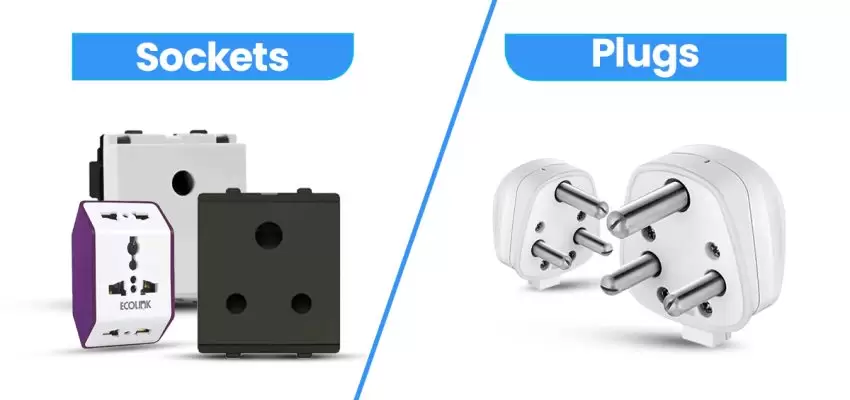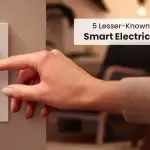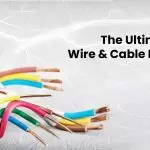Electricity may be safely delivered to power and operate a variety of products and equipment through the use of electrical plugs and sockets, commonly referred to as electrical connectors. Due to variations in electric systems, voltages, and safety regulations, plugs, and sockets can be found in a vast array of shapes, sizes, and combinations worldwide. An overview of some of the most popular kinds of electrical plugs and sockets will be given in this article, along with an explanation of their main characteristics, applications, and regional differences.
Post your Requirement
Let’s first define these fundamental terms:
| Keyword |
Description |
| Electrical Socket | A device that provides an outlet for electrical appliances to connect to a power source. |
| Power Socket | Similar to an electrical socket which helps to connect high-voltage power between 10A and 16A, it allows electrical appliances to connect to a power supply. |
| USB Socket | A socket specifically designed to accommodate USB (Universal Serial Bus) connections, commonly used for charging and data transfer. |
| AC Plug Socket | A socket designed to accommodate AC (alternating current) plugs, typically used for high-powering various electrical devices, Like ACs. |
| Plug and Socket | A combination of plug and socket, where the plug is inserted into the socket to establish an electrical connection. |
| Plug | The male component of a plug and socket system is inserted into the socket to complete an electrical circuit. |
| 3 Pin Plug | A type of plug with three pins, commonly used for grounding purposes in electrical systems. |
| Plug Socket | A combination of a plug and socket facilitates the connection of electrical devices to a power source. |
| Power Plug | A plug specifically designed for supplying power to electrical devices. drawing 15 Amps to be plugged into such a socket. 120 Volts is a normal voltage for home power sockets. Then when the appliance is turned on it dissipates 120 Volts X 15 Amps = 1800 Watts, or 1.8 kW |
| Electric Plug | Another term for a plug used to connect electrical devices to power sources. |
| Female Plug Socket | The socket component that receives and connects with the male plug, completes the electrical circuit. |
| Male Plug Socket | The plug component is inserted into the socket to establish an electrical connection. |
| Wall Plug Socket | A socket is installed in a wall, providing a convenient point for connecting electrical devices to a power supply. |
| Electrical Plug Types | Variations in plug designs, including different pin configurations, shapes, and sizes, to accommodate various electrical standards and applications. |
| Round Plug Socket | A socket designed to accommodate round-shaped plugs, which may be found in specific electrical systems or appliances. |
Classifications
Electrical plugs and sockets can be classified in a few key ways:
- By number of pins – from two pins up to five or more pins depending on the electric system and intended applications.
- By shape and size – round, flat, large, small to fit socket dimensions.
- By type of current – alternating current (AC) or direct current (DC).
- By electrical system standards – meeting different national/regional safety and compatibility standards.
Key Parts and Features
Despite variation in styles, plugs, and sockets share some common key components and features. These include:
- Pins – the protruding metal pins on the plug that connect to the socket’s holes and convey electric current.
- Holes/sockets – the openings in the electrical socket that receive the plug pins.
- Contacts – allow transmission of electrical power through connection of pins to socket holes.
- Grounding – third pin or other connector that serves as a safety grounding mechanism.
- Terminals – rear side conductive points that wires are affixed to.
Additionally, features like insulation, voltage ratings, plug latches, sleeves, and more can differ among plug/socket sets.
Applications
Electrical sockets and plugs transfer power for a wide range of residential, commercial, and industrial applications. While types can differ among regions, common applications include:
- Household devices – appliances, lighting, electronics, and tools used in homes.
- Audio/visual equipment – devices using audio and video signals, both consumer and industrial-grade.
- Computers and IT equipment – plugs and sockets designed for computer connectivity.
- Power tools and machinery – robust connectors to operate heavy tools/equipment.
- Commercial buildings – wiring buildings to power offices, retail spaces, etc.
- Outdoor and portable equipment – connectors for mobile or outdoor devices/machinery.
Additionally, waterproof and specialty connectors are made for unique environments or power demands. Connector types also differ between low-voltage DC devices compared to higher-voltage AC power supplies.
Trends and Innovations
As technology evolves, amendments to safety standards and new approaches also emerge in electrical connectors. Some trends include:
- Rise of USB power delivery for mobile device charging.
- Adoption of flexible, modular sockets to fit multiple plug type.
- Integration of smart sensors and switches into plugs/sockets.
- Development of higher amperage/voltage connectors meeting updated energy demands.
- Standardization efforts for universal power plug compatibility.
There is also growing adoption of USB and wireless charging connectors alongside traditional AC power sockets suitable for assorted country standards. Overall, ease of use, durability, and safe power transmission remain priorities driving new advancements.
Conclusion
From two-pin basic connectors to multi-pin industrial grades, electrical plugs and sockets vary enormously around the world to meet different technical and regulatory requirements. Yet whether simple circular plugs or protective grounded sockets, all aim to safely deliver electricity to power a multitude of modern equipment and devices. As energy demands escalate globally, we can expect continued innovation in designing improved electrical connectors across many applications. However, regional and national standardization still plays a key role in compatibility and safety assurance in electrical systems.























Post A Comment